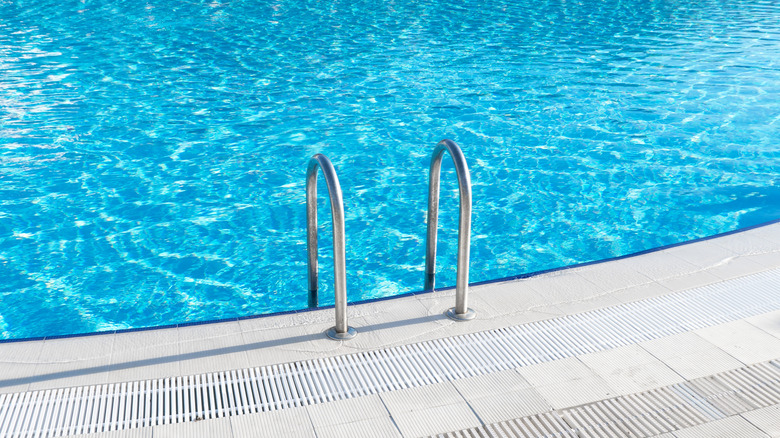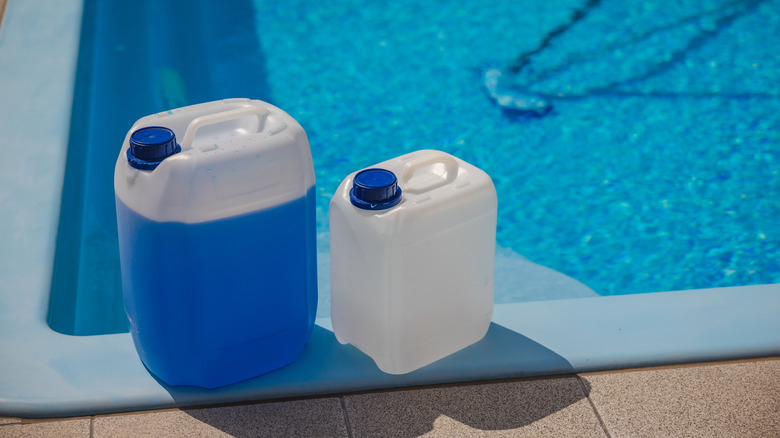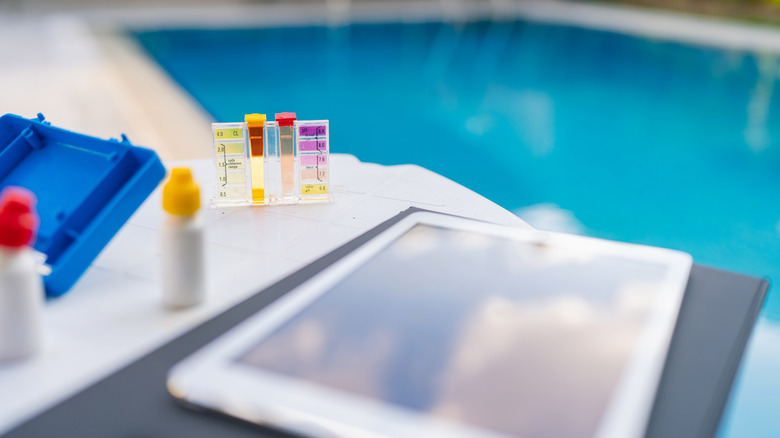Is Liquid Chlorine As Effective As You'd Think For Your Pool? Here's What We Found
When you pour liquid chlorine into your swimming pool, you expect it to be effective. After all, it's labeled "pool-grade" and priced accordingly. But what if that assumption is wrong? A recent report from the Arizona Department of Agriculture found that 77% of tested liquid chlorine products contained less chlorine than what was stated on the label. This included 17 out of 22 batches. Some samples had chlorine levels as low as 6%, which is about the same as regular household bleach.
That's a serious problem if you're relying on these products to keep your pool safe, and it's one of the worst mistakes you can make when cleaning your pool. Most people don't think twice about the accuracy of a chemical label. If the chlorine strength is off, everything else is affected, too. That includes your dosing, your water chemistry, and your pool's ability to eliminate harmful microbes. It raises a simple but unsettling question: How many pools out there look clean but aren't actually safe to swim in? Before you assume your pool is protected, it might be time to take a closer look at what's really in that bottle.
What weak chlorine really means for your pool
You might not notice anything right away. The water still looks blue, and you're following the directions on the label. But if the chlorine you're using is weaker than expected, it's quietly failing to do its job. That means your pool might not be reaching the chlorine levels needed to kill bacteria, algae, and other harmful organisms. These are just some of the icky results from not cleaning your pool properly. Even if you're dosing it "correctly," the actual sanitizing power could be too low to keep the water safe.
And during summer heat and sunlight the chlorine degrades even faster, which increases the risk. Poor sanitization can lead to green water, irritated skin, and a higher chance of waterborne illness. And if you try to fix it by adding more chlorine without knowing the true strength, you could end up overshooting and throwing off your pool's chemical balance. The bottom line is that the label might be misleading, and your pool could be paying the price.
What can you do about it?
So, if you can't fully trust what's on the label, how do you make sure your pool stays safe? First, test your water regularly. Don't just assume the chlorine you added is doing its job. Use a home test kit or get it checked at a local pool store to make sure your free chlorine level stays within the recommended 1–3 parts per million. It's the only way to really know what's going on in your water. Next, store your chlorine properly. Heat and sunlight break it down quickly. If you're keeping it in a hot garage or in direct sun, it may already be weaker before it even hits the water. Keep it in a cool, shaded spot, tightly sealed.
Also, ask questions at the point of purchase. Some suppliers can provide batch testing info or at least help you choose fresher stock. If you notice cloudy water or algae even after treating your pool, don't just add more chlorine, stop and test. These could be signs that your pool is in dire need of a cleaning. The more proactive you are, the less likely you are to waste money or put swimmers at risk.


